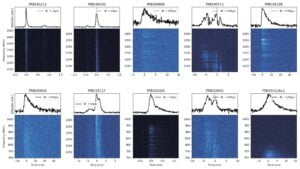Project area/S
- Pulsars and Fast Transients
Project Details
Fast radio bursts are the brightest radio explosions in astronomy. Lasting typically a thousandth of a second, we view them from galaxies so distant that their light was emitted when the Universe was half its current age. Our collaboration, CRAFT, is using the Australian Square Kilometre Array Pathfinder to detect fast radio bursts, identify their host galaxies, and reconstruct their time profiles down to 3 nanoseconds resolution. The aim is to determine what physical mechanism is responsible for their extreme brightness. In this project, the student will analyse FRB time profiles, and use the statistical properties of the radio intensity (via a quantity known as the “modified coherence function”) to search for hints of the emission mechanism.
Student Attributes
Academic Background
Preferably astronomy/physics background
Computing Skills
Experience with Unix or linux, python
Training Requirement
Project Timeline
- Week 1 Inductions and project introduction
- Week 2 Background reading and Initial Presentation
- Week 3 Working with high-time-resolution FRB data
- Week 4 Implementing calculation of modified coherence function
- Week 5 Successful runs of code locally
- Week 6 Implementation on OzStar supercomputer
- Week 7 Interpretation of results for one CRAFT FRB
- Week 8 Further calculations/automation for multiple FRBs
- Week 9 Final Presentation
- Week 10 Final Report

The time-frequency profiles of 10 fast radio bursts (FRBs) detected by the Australian Square Kilometre Array Pathfinder (ASKAP) radio telescope. These show a diversity of structure in both the time- and frequency-domains. What can this tell us about the emission mechanism? This project aims to find out. Image courtesy Danica Scott and CRAFT.

